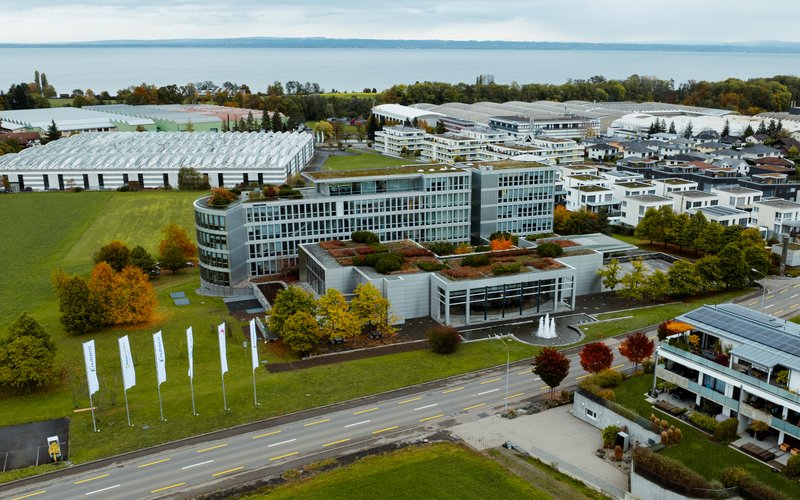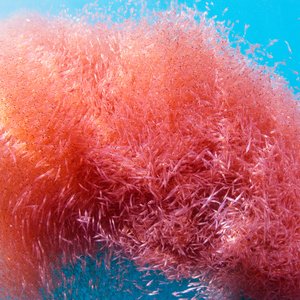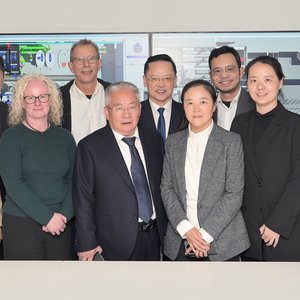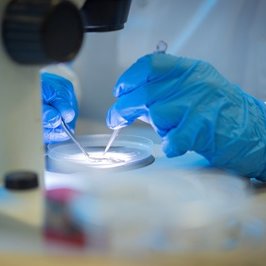Nutreco recently celebrated the opening of its Garden of the Future, the new hub for its Phytotechnology program. Located in Thurgau, Switzerland, the groundbreaking facility gathers all of Nutreco’s phytotechnology activities, from discovery and experimental cultivation to plant development and production, under one roof.
The Garden of the Future facility includes access to a 500 square meter experimental greenhouse for plant breeding and propagation, a 5,000 square meter vegetative mass propagation greenhouse, around 30 hectares of cultivation space and a “Future Garden” to display the facility’s novel plants.
The facility is located in an area known as the Phyto Valley, which contains a network of phyto-pharmaceutical companies, startups and laboratories. Nutreco’s Garden of the Future is led by its director Bernd Büter, who is also director of the company’s Phytotechnology Program. Karin Berger, Phytotechnology Discovery director, serves as ethnobotanist, responsible for screening the plants and confirming their efficacy. The two-day grand opening event showcased the work being done at the Garden of the Future for customers and journalists by members of the company’s Exploration team.
“Nutreco’s Garden of the Future will help us address many of the specific challenges our customers face and support them in improving performance, health and welfare in unprecedented new ways. The work being done here is truly groundbreaking – Nutreco’s Phyto-complexes are unmatched in quality and consistency and most use plants that have never before been cultivated for animal nutrition. We believe these products will benefit producers around the world and play a very important role in helping us achieve our purpose of Feeding the Future,” said David Blakemore, Nutreco new CEO.
A new approach
Nutreco’s initiative is completely different from anything the industry has produced in the past. It is focused on creating phytotechnology solutions, called Phyto-complexes, plants or plant metabolites, that when added to feed, have physiological impacts that consistently support the performance, health and welfare of aquatic species, farm and companion animals.
“We know that plants influence animal physiology. The previous technologies were all developed with that single molecule idea to kill bacteria. We are now talking about a new approach using a plant to tackle an animal problem, not targeting pathogens,” Emma Wall, director of development & deployment at Nutreco Exploration, explained.
Phyto-complexes are developed in direct response to existing market issues, identified in close collaboration with global Trouw Nutrition and Skretting customer-facing teams. Many of Nutreco’s Phyto-complexes come from plants that haven’t been cultivated before, which requires the team at the Garden of the Future to have a high level of plant production expertise to create vertically integrated plant supply chains for these new plants.
“The team at Nutreco’s Garden of the Future has already taken great strides in filling our innovation portfolio with new solutions directly addressing our customers’ challenges, with four Phyto-complex products already launched and 17 in the pipeline. So far, we have collected around 450 unique plant material samples and are performing field trials and production in seven countries,” said chief science officer, David Bravo.
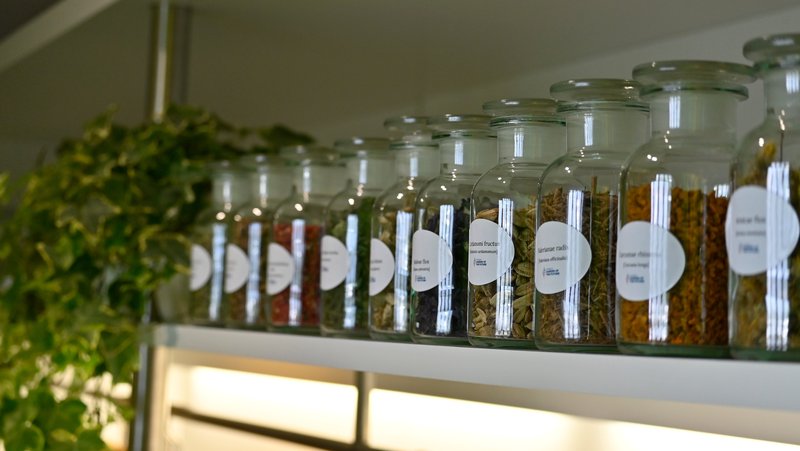
Credits: Nutreco
The Discovery process
Phyto-complexes are a combination of active molecules expressed by the entire genotype of a plant. The full effect of the Phyto-complex comes from the complete profile of active molecules that is specific to each plant (fingerprint). Nutreco’s team identifies one specific plant with the right genotype that solves a specific problem, with a very specific, complex combination of active molecules.
The process starts with a specific issue and request from farmers, for example, chronic inflammation, liver disease, etc. The Nutreco Exploration team then defines suitable molecular targets involved in the process they want to impact. Next, they select biological models to test the efficacy of plant candidates on these targets. After that, the team selects the plant candidates through a proprietary AI tool. Selection is made considering their feasibility in terms of growing conditions, processing, sustainability of the supply, regulatory framework and positioning, and costs, among others.
From an initial list of, for example, 100 different plant species, the team ends up identifying the species that better solves the animal problem (plant 0). Plants from the same species can have a different profile of these Phyto-complexes so the team identifies which particular plant (genotype) has the right profile and this one becomes the final selected plant (mother plant).
Production and processing
Once the specific genotype of a plant with the right phenotype (fingerprint) is identified, the team propagates it using modern technology. The team developed a true-to-type propagation method for each plant through vegetative cells to propagate the plant in vitro. The technique allows it to maintain the genotype and propagate easily and fast. This is being made at Nutreco’s Garden of the Future facilities.
After propagation, the team has to grow plants for which, in some cases, there is no previous knowledge. The plant domestication team develops the cultivation method and defines the best locations through greenhouse trials in controlled conditions and field stations in Uzbekistan, Kenya, India and a new coming up in Paraguay. All these data are put into the AI tool that helps decide the best growing conditions. The objective is not biomass yield, it is the maximum yield of actives per hectare and being able to grow the plant in different places.
The outcome from all these trials is put together in a manual, a standard operation procedure, that is shared with contract growers to produce exactly as it was developed. Nutreco has built its own network of growers that is continuously monitored to ensure the quality of the plants.
Harvest and processing is done when the composition of the active compounds is optimal. Nutreco’s approach uses an entire part of the plant, the root or the leaf, for example, where these Phyto-complexes are located. Minimal processing is sought after, trying to use perennial plants, and working with aerial parts so the plant does not need to be destroyed, whenever possible. Plants are grown and processed around the world and supply takes advantage of Nutreco’s global supply chain.
The proprietary AI tools that Nutreco is using for either the discovery or production process are based on data from its own biological models. These brand new tools have different capabilities as a discovery tool but also as quality control to ensure the fingerprint as well as making sure there is no infringement.
Since plants can’t be patented, the group has adopted different layers of protection. One is through variety protection for 25 years to make sure nobody else can have that plant. A second layer of protection is through DNA. Its proprietary algorithm also ensures consistency and protection of the supply. The company also has a patent for application in the feeds.

Nutreco Garden of the Future team. Credits: Nutreco
Applications in aquafeeds
A practical example of the application of this technology in aquafeeds was presented by Alex Obach, director of innovation at Skretting.
Shrimp mainly use glucose for metabolic energy purposes, however, shrimp diets were usually formulated with high levels of protein. That extra protein was being used for energy, it made aquafeeds expensive and the nitrogen excess ended up in the environment. Therefore, shrimp diets have been changing in the past few years to low protein levels. The request from Skretting to the Discovery team was a solution to ensure shrimp is utilizing the glucose that is available for metabolic purposes in a more efficient way. The team found a plant that improves the animal’s nutrient intake.
“The applications in aquaculture are very wide. There is potential to optimize the physiology of the animal, it can help them be more robust and can help with welfare, health and productivity. We look at what the main issues are, where we also have heritage and we can really make a big difference with functional nutrition. It can vary from environmental stressors to pathogenic stressors and handling and all sorts of different approaches,” Charles McGurk, research and development director science at Skretting Aquaculture Innovation, told Aquafeed.com.
“Several of these plants have an impact on many different pathways. We are fine-tuning and combining it with what we already have to make an even more complex and more holistic, functional, preventative diet than what we have already on the market,” Linda B. Jensen, team leader of Health at Skretting Aquaculture Innovation, said.
“We have done trials already in fish and shrimp and we see that the technology is effective. The approach works. We have been working for over three decades in functional diets and we are combining it with other knowledge and expertise that we have. This is not a magic bullet, it is part of good management practice and in combination with all the best practices, this is a tool that definitely can work together to really make a measurable difference,” McGurk explained.
“The reason for investing was to be in the driver’s seat, in steering the next generation of products. We have many years of experience working in this sort of realm and we know it works. This really gives us the opportunity to take it much further forward with the approach that we take. We can optimize and come up with something that's really de facto what we're looking for. We have a unique opportunity here between the plant kingdom and the animal kingdom,” McGurk said. “For us, it's all about the customers and what their pain points are, what their needs are, because there's no point in us developing anything outside that. So, we take those inputs very much into consideration and see how we can find win-win situations, where we can add value, and improve productivity, animal welfare and sustainability. This is all embedded in this approach.”
In terms of aquafeed application, the products are able to go through the extrusion process and will be incorporated into Skretting aquafeeds. “That is our preferred route and it will be easier to implement,” said Jensen.
“These products are very stable and that is one of the advantages of using them as opposed to essential oils, which are very volatile and have to be traditionally added post-extrusion and during the coating phase,” McGurk explained.
The feedback from customers has been very positive so far and the company sees opportunities across the globe, but not only in animal feeds. “In the future, there is a lot of potential. Once we have fully maximized the value for our internal businesses, there are businesses outside of Nutreco, in our industry, that could really benefit from these types of things,” Wall concluded.


